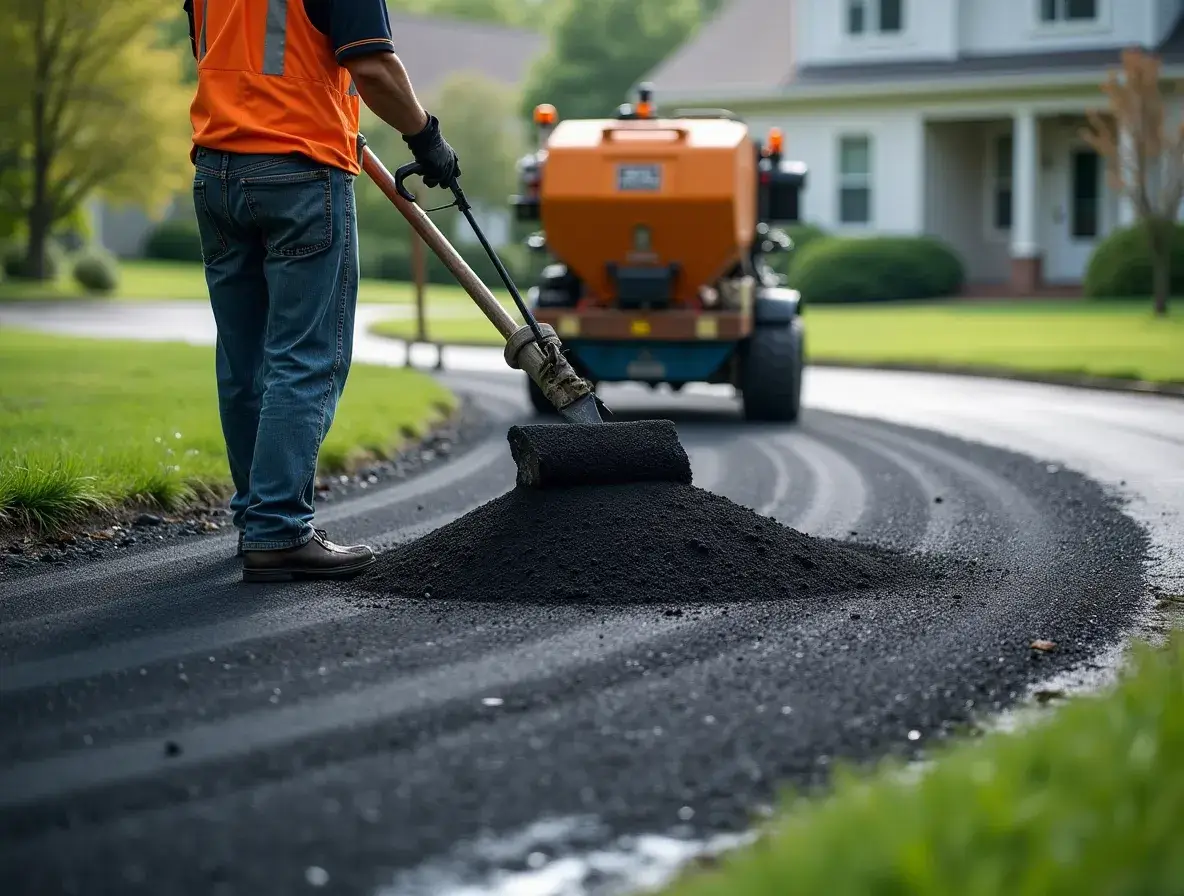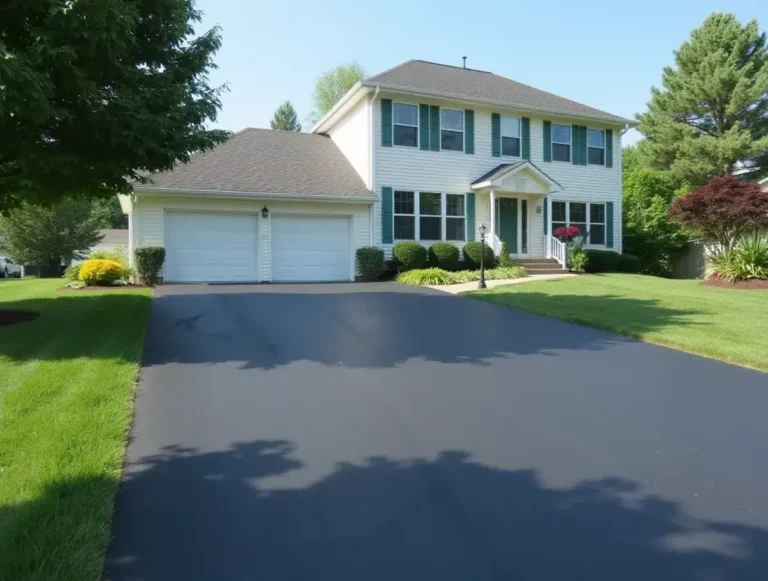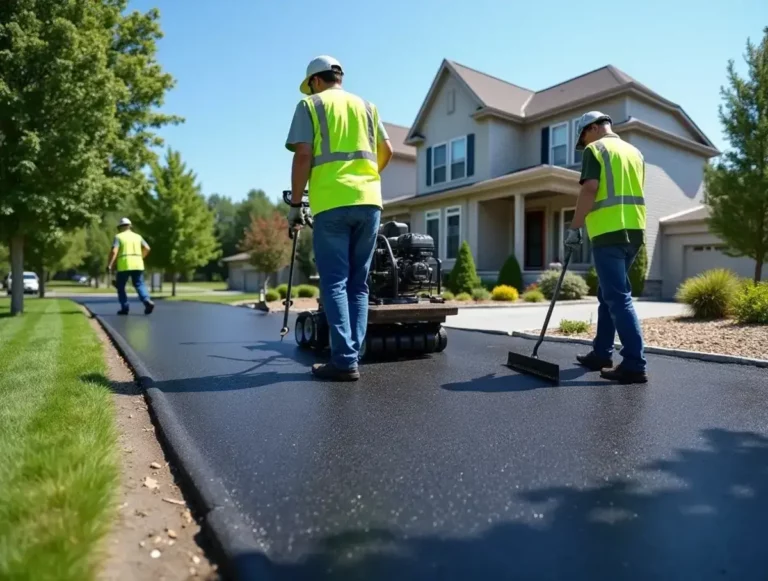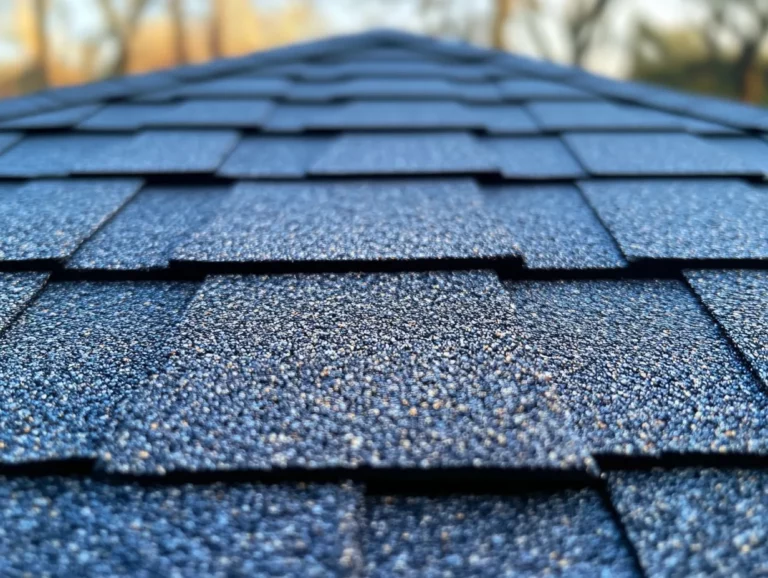Are you planning a new driveway or parking lot project? Don’t waste money by ordering too much asphalt or compromise quality with too little! Understanding how to calculate asphalt tonnage accurately is crucial for any paving project’s success, and this comprehensive guide will walk you through everything you need to know.
Table of Contents
Why Accurate Asphalt Tonnage Calculations Matter
Getting your asphalt tonnage calculations right isn’t just about numbers—it directly impacts:
- Cost savings: Avoid expensive overordering or costly delays from underordering
- Project success: Ensure proper compaction and durability with the right amount of material
- Environmental responsibility: Reduce waste and minimize your project’s carbon footprint
Whether you’re a homeowner planning a driveway renovation or a contractor bidding on a commercial parking lot, these calculations will help you estimate accurately and work efficiently.
For instant calculations, try the free calculators at asphaltcalculator.co to simplify your planning process!
The Core Calculation Explained: Your Step-by-Step Guide
The basic formula for calculating asphalt tonnage is surprisingly straightforward:
Tonnage = (Area × Thickness × Density) ÷ Conversion Factor
Let’s break down each variable to ensure you understand exactly what you’re calculating:
Area
This is the surface measurement of your paving project in square feet or square yards. For rectangles, simply multiply length by width. For irregular shapes, divide the area into simpler geometric shapes, calculate each separately, and add them together.
Thickness
This refers to the depth of your asphalt layer, typically measured in inches. Different applications require different thicknesses:
- Residential driveways: 2-3 inches
- Commercial parking lots: 3-4 inches
- Roads and highways: 4-6 inches or more
Density
Asphalt density varies based on the mix type and aggregate used. Typically:
- Hot mix asphalt: 145-150 pounds per cubic foot
- Cold mix asphalt: 140-145 pounds per cubic foot
Conversion Factor
To convert cubic feet to tons, use the factor 2000 (since there are 2000 pounds in a ton).
Asphalt Density Reference Table
| Asphalt Mix Type | Typical Density (lbs/ft³) | Applications |
|---|---|---|
| Dense-graded hot mix | 145-150 | Driveways, roads, general paving |
| Open-graded hot mix | 140-145 | Drainage layers, noise reduction |
| Stone mastic asphalt | 150-155 | High-traffic areas, highways |
| Cold mix asphalt | 140-145 | Patches, temporary repairs |
Step-by-Step Calculation Process
Follow these steps to calculate your asphalt tonnage correctly:
- Measure your area in square feet (length × width)
- Convert your thickness from inches to feet (divide by 12)
- Multiply the area × thickness × density
- Divide by 2000 to convert from pounds to tons
- Add a waste factor (typically 5-10%) to account for spillage and compaction
Worked Examples: Calculating Asphalt Tonnage in Different Scenarios
Example 1: Residential Driveway (Rectangular)
- Length: 50 feet
- Width: 20 feet
- Thickness: 3 inches
- Asphalt density: 145 lbs/ft³
Step 1: Calculate area = 50 × 20 = 1,000 square feet Step 2: Convert thickness to feet = 3 ÷ 12 = 0.25 feet Step 3: Calculate volume = 1,000 × 0.25 = 250 cubic feet Step 4: Calculate weight = 250 × 145 = 36,250 pounds Step 5: Convert to tons = 36,250 ÷ 2000 = 18.13 tons Step 6: Add 8% waste factor = 18.13 × 1.08 = 19.58 tons
You would need approximately 19.6 tons of asphalt for this driveway.
Example 2: Commercial Parking Lot (Irregular Shape)
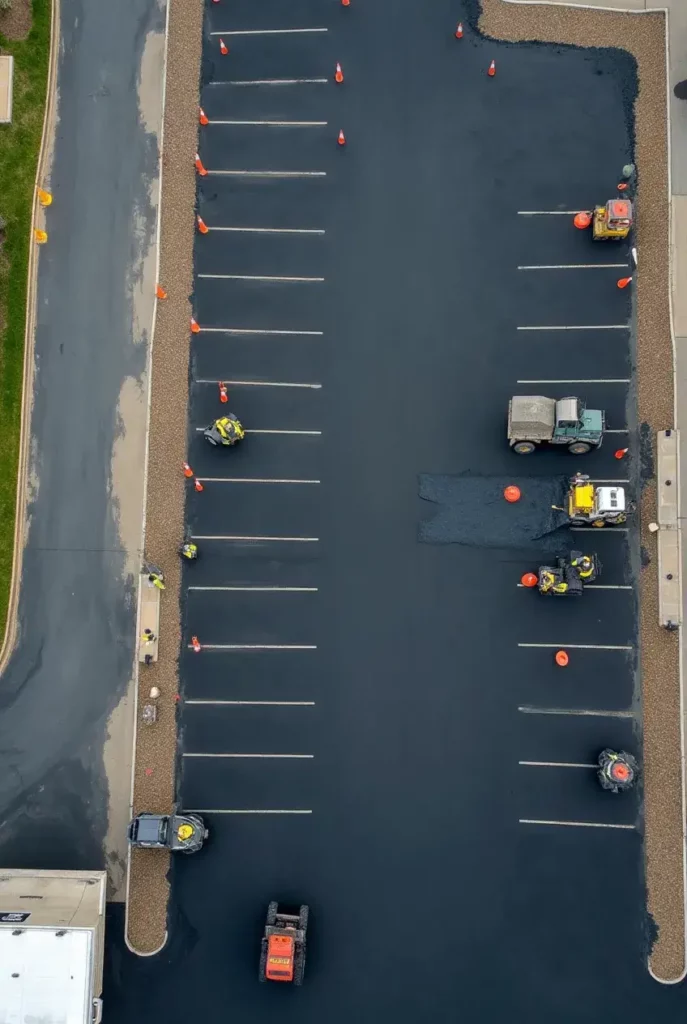
For irregular shapes, divide the area into rectangles and calculate each separately:
- Section A: 100 × 80 feet = 8,000 square feet
- Section B: 50 × 60 feet = 3,000 square feet
- Total area: 11,000 square feet
- Thickness: 4 inches
- Asphalt density: 150 lbs/ft³
Following our formula and steps:
- Volume = 11,000 × (4 ÷ 12) = 3,666.67 cubic feet
- Weight = 3,666.67 × 150 = 550,000 pounds
- Tonnage = 550,000 ÷ 2000 = 275 tons
- With 10% waste factor = 302.5 tons
Example 3: Roadway (Varying Width)
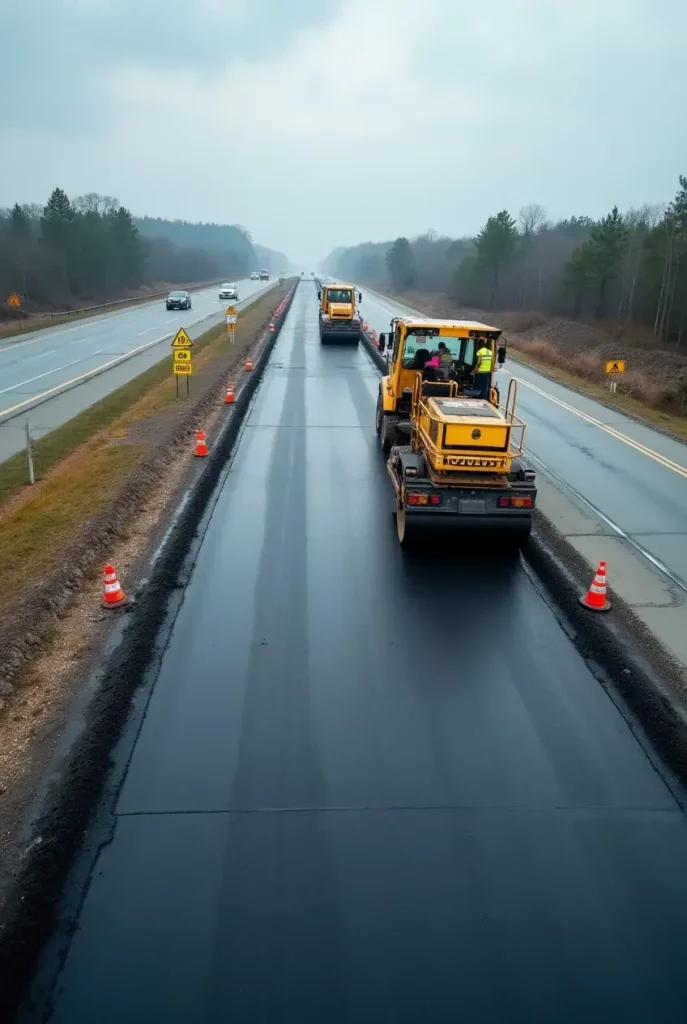
For a road with varying width, calculate sections separately:
- Section 1: 500 feet × 24 feet = 12,000 square feet
- Section 2: 300 feet × 20 feet = 6,000 square feet
- Total area: 18,000 square feet
- Thickness: 5 inches
- Asphalt density: 150 lbs/ft³
Final calculation with waste factor: approximately 625 tons
Factors Affecting Asphalt Tonnage Requirements
Compaction Rate
Asphalt shrinks as it compacts, affecting your final tonnage requirements:
- Typical compaction rate: 15-25%
- Rule of thumb: Add 20% to your calculated tonnage to account for compaction
Waste Factor
Always include a waste factor to account for:
- Material spillage during transport and placement
- Trimming and edging waste
- Handling losses
Recommended waste factors:
- Small projects (driveways): 5-8%
- Medium projects (parking lots): 8-10%
- Large projects (roadways): 10-15%
Sub-base Preparation
Proper sub-base preparation is essential for accurate estimating:
- Ensures even thickness across the project
- Prevents excess material usage in low spots
- Creates proper drainage and stability
Need help with these calculations? Use the free calculators at asphaltcalculator.co to get instant, accurate results for your specific project dimensions.
Advanced Considerations for Professional Projects
Calculating Asphalt for Overlay Projects
When resurfacing existing asphalt:
- Assess the condition of the existing surface
- Account for leveling courses to address irregularities
- Typically use 1.5-2 inches of new asphalt for overlays
- Consider milling costs if the existing surface needs preparation
Accounting for Existing Base
If working with an existing base:
- Evaluate the condition and stability of the current base
- May reduce the thickness requirements for new asphalt
- Consider using a thinner wear course over a solid existing base
Common Mistakes to Avoid When Calculating Asphalt Tonnage
- Using inaccurate measurements: Always double-check your area calculations
- Ignoring compaction rates: Remember that asphalt will compact by 15-25%
- Forgetting the waste factor: Always add 5-15% for waste depending on project size
- Using the wrong density: Different mixes have different densities
- Neglecting temperature effects: Hot asphalt expands; consider timing of your project
Frequently Asked Questions: How Do You Calculate Asphalt Tonnage?
How do I convert square yards to square feet for my calculations?
Multiply square yards by 9 to get square feet (1 square yard = 9 square feet).
Should I order exactly the tonnage I calculate?
Always add a waste factor of at least 5-10% to your calculated tonnage.
How do I find asphalt contractors near me who can verify my calculations?
Search online directories, ask for recommendations from local hardware stores, or check with your local contractors’ association.
How does weather affect asphalt calculations?
Extreme temperatures can affect compaction rates. In very hot weather, you may need slightly more material to account for faster compaction.
Can I use the same formula for different types of asphalt mixes?
Yes, but be sure to use the correct density for your specific mix type as shown in our density reference table.
Conclusion: Getting Your Asphalt Tonnage Right
Calculating asphalt tonnage accurately is essential for successful paving projects. By following the formula, considering all relevant factors, and avoiding common mistakes, you can ensure you order the right amount of material for your project.
Remember these key points:
- Use the formula: Tonnage = (Area × Thickness × Density) ÷ 2000
- Add appropriate waste and compaction factors
- Consider the specific requirements of your project
- Double-check all measurements before ordering
Ready to calculate your asphalt needs? Visit asphaltcalculator.co for free calculation tools that make estimating asphalt tonnage quick and accurate. Whether you’re planning a DIY project or working with asphalt contractors near you, these tools will help ensure your project’s success from the start.

